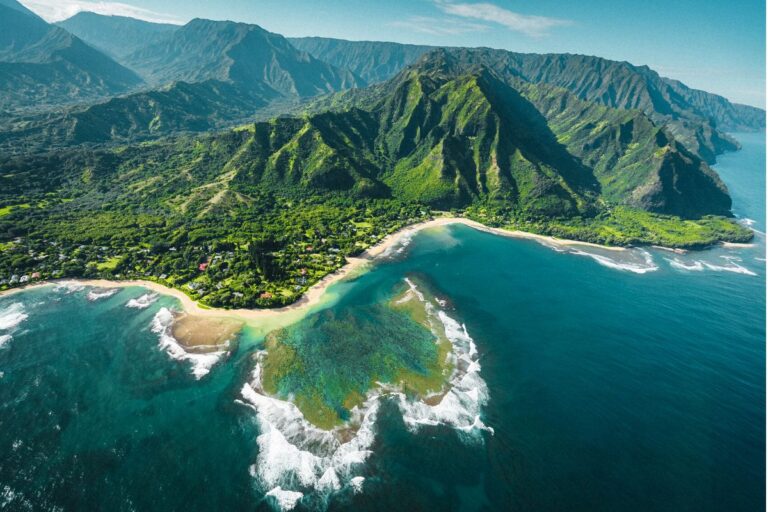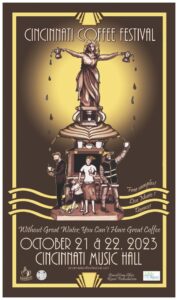For many coffee lovers, when they hear/think about Hawaii and coffee, Kona coffee comes to mind first.
Here I’ll share interesting insights on Hawaiian Kona coffee facts and history.
Besides being the most popular coffee brand in Hawaii, this amazing coffee has also gained a lot of popularity among coffee aficionados around the world.
But first things first, let’s start with Hawaiian coffee in general.
By Lilian.
Affiliate disclosure
This page may contain affiliate links – we may earn a small commission when you make a purchase through these links. This is at no extra cost to you.
A Dive into Hawaii Coffee History
The journey to Hawaiian coffee started in the 1820s.
As the Kona Coffee Buzz puts it, an English agriculturalist, John Wilkinson, planted coffee plants in Oahu, Manoa Valley. He had come with the coffee plants from Brazil.
The coffee plants did not do well.
However, in 1828, an American Missionary Reverend Samuel took some cuttings of the Wilkinson’s coffee plants and planted them in Kona District.
Luckily, the coffee trees this time thrived and became the start of a long journey of growing coffee in Hawaii.
Until the 1980s, coffee farming in Hawaii was really not hyped.
Sugar and pineapple was the deal – at least in terms of commercial farming.
However, when the demand of the two cash crops dwindled in the 80s, coffee farming gained momentum!
Today, many Hawaii farms produce coffee more than any other cash crop!
5 Hawaiian Coffee Facts Every Coffee Lover Should Know
Hawaii is the Only North American US State that Grows Coffee
Before you bash me, let me acknowledge that California also produces coffee, but only for domestic purposes.
According to Hayman Coffee, Hawaii is the only state that has a commercial coffee production industry in North America!
All Hawaiian Islands Grow Coffee
Let’s set things clear here.
Coffee is not native in Hawaii; it actually was introduced in the 1800s.
However, to date, every main Hawaiian Island grows coffee!
Kona District is the Biggest Coffee Growing Region in Hawaii
It’s famed for their exclusive Kona coffee beans (we’ll discuss this later…)
The Magic is in Hawaiian Soils!
The entire Hawaiian state is covered with rich volcanic soils.
The Perfect Daily Grind, arguably one of world’s leading voices for coffee, mentions that volcanic soils are superior to other types of soils – at least with respect to the growth of coffee plants.
Coffee grown in rich volcanic soils has a stronger flavor, and is definitely sweeter!
Hawaii Coffee Farms Make a Lot of Money Selling Coffee to Tourists
Besides the amazing beaches, tourists also want to have a taste of Hawaiian coffee.
Hawaii coffee farms are aware of this!
They know that tourists are willing to spend big dollars on the Hawaiian coffee experience. That’s where they get the most money!
In fact, according to Home Grounds, a member of the Specialty Coffee Association, Hawaiians only grow coffee to sell to tourists at high prices and for coffee blends!
Hawaii Coffee Regions
The main coffee growing regions in Hawaii are:
- Kona
- Ka’u
- Puna
- Hamakua
- Maui
- Kauai
- Molokai
- O’ahu
Hawaiian Coffee Tasting Notes
Well, you don’t have to be a veteran coffee specialist to get a kick out of Hawaiian coffee!
It has a very clean, sweet and bright taste with notes of citrus, berry, milk chocolate and brown sugar.
Some people also get some floral honey taste and a lingering fruity sweetness!

Most Popular Hawaiian Coffee Brands?
The Hawaii Coffee Company lists 3 popular coffee brands.
They are:
- Royal Hawaiian Coffee
- Royal Kona Coffee
- Hawaii Lion Coffee
Kona coffee is by far the most popular brand, which will be our focus from now on.
Enjoy!
5 Astounding Kona Coffee Facts
Kona Coffee is Very, Very Rare
Kona coffee is very rare (I’ll tell you why, later on).
So, the government allows coffee blends made from 90% imported coffee beans and 10% Kona coffee beans labeled “Kona coffee”.
According to an article posted in the Hawaii Magazine, state law requires that all Kona coffee blends must have at least 10% of coffee sourced from Kona farm.
Kona Coffee is Not Native to Hawaii
Surprising, right?
While Kona coffee is grown in Kona, Hawaii, it actually came from coffee farms in Brazil.
Remember the American Missionary Reverend Samuel we mentioned earlier? He brought Arabica coffee from Brazil to Hawaii.
Kona Coffee Beans Are Hand-Picked, to Date!
Yes, handpicking remains the harvesting method for Kona coffee from the 1800s to date.
Farm machinery cannot navigate the terrain with ease, so they have to pick by hand!
The best thing about this? Kona-coffee.com says no unripe, bitter beans get in the bag!
What’s more, the farmers get to enjoy some nice music and great conversations in the process. The result is a robust flavor for every cup of Kona coffee!
Kona Coffee Plants Bloom Twice a Year
That’s in March and August.
Kona Coffee Grows at Over 2,000ft Altitude
Kona coffee is grown at 2,000-5,000ft.
In case you’re not aware, for coffee production, altitude is everything!
Perk Coffee asserts that high altitudes have cooler temperatures so the growth of coffee is also slow, but steady. The result is coffee beans with more sugars, a more superior body and stronger flavors!
Let me tell you more about the Kona coffee regions – or what they call the Kona Coffee Belt.
What’s the Kona Coffee Belt?
Kona coffee grows on a “belt” which is about 2-3 miles wide and 30 miles long.
It lies on the Western Coast of Hawaii.
The belt has around 600 small coffee farms.
Most of the coffee farms range from 1 to 5 acres in size, although you’ll find some farms as big as 400 acres!
The coffee belt starts in the North at Makalei and goes to Oceanview, all the way to Hualalai and Mauna Loa Mountains/volcanoes on the West.
The altitude ranges from 500 – 3,200ft above sea level.
Harvesting and Processing Kona Coffee Beans
As earlier stated, Kona coffee beans are picked by hand.
The farm owners contract pickers to collect all the red coffee berries in their farms.
They then proceed to pulp the fruits, a process that involves separating the inner bean from the outer layer/skin. They call it “wet milling”.
After this, the beans are left to dry in the sun after which they’re roasted and packed in bags for sale, so you can finally have a cup of this amazing coffee!
Now, as a coffee aficionado, you’re wondering, why is Kona coffee so rare and expensive; and is it really as good as it’s hyped?
Read on!
Why is Kona Coffee So Rare?
Kona coffee makes up just about 1% of coffee in the world. That’s crazy rare!
Why is this?
The ideal growing conditions for this amazing coffee is just within the Kona Coffee Belt we stated earlier.
Let me remind you it was about 2-3 miles wide and 30 miles long, only, WORLDWIDE.
That’s such a small growing region for coffee that’s got fans around the world…
It’s bound to be rare!
Why is Kona Coffee So Expensive?
From the Kona Coffee Blog, the cost of labor is everything!
Many countries that grow coffee harvest the beans using machines. However, as mentioned earlier, Kona coffee is hand-picked by farmers and hired pickers.
They have to be paid for this labor!
They’ve got to pick cherries from the same trees multiple times a year, group them into grades, dry, roast and pack them for sale.
So, essentially, the coffee farmers are paid the minimum wage, all year! Not the inequitable wages coffee farmers in other countries have to endure.
But isn’t it worth it paying an extra price considering the hard work farmers have to put in? Come on, farmers also deserve a decent life!
Is Kona Coffee Really Good?
Absolutely! Kona coffee is like no other in the world.
As The Coffee Chronicler puts it, some people think that Kona coffee only holds a special place because of the American psyche! True, it’s bound to have a special allure for the American coffee lovers because it’s American coffee.
But there’s more to it…
Kona coffee grows in a unique island microclimate with rich volcanic soils, a high altitude and fair cloud coverage.
What’s more, Kona coffee farmers are more educated and experienced than third-world coffee farmers so they’ll definitely produce higher quality coffee out of high quality coffee seeds!
This discussion wouldn’t be worth it if we skipped the most popular and original Kona Coffee:
The Royal Kona Coffee
Royal Kona Coffee is 100% Kona Coffee!
It’s selected from the highest quality of Kona coffees. So, the beans are the largest and most flavorful. They’re also roasted by the most experienced roasters!
A disclaimer here: For these 100% Kona coffees, you’re going to part with a few extra dollars, compared to your average supermarket joe. But it’s worth it!
They also have 10% Kona coffee blends (they’re definitely way cheaper), coffee pods and decaf coffees!
Photos by Foundry and Karsten Winegeart





